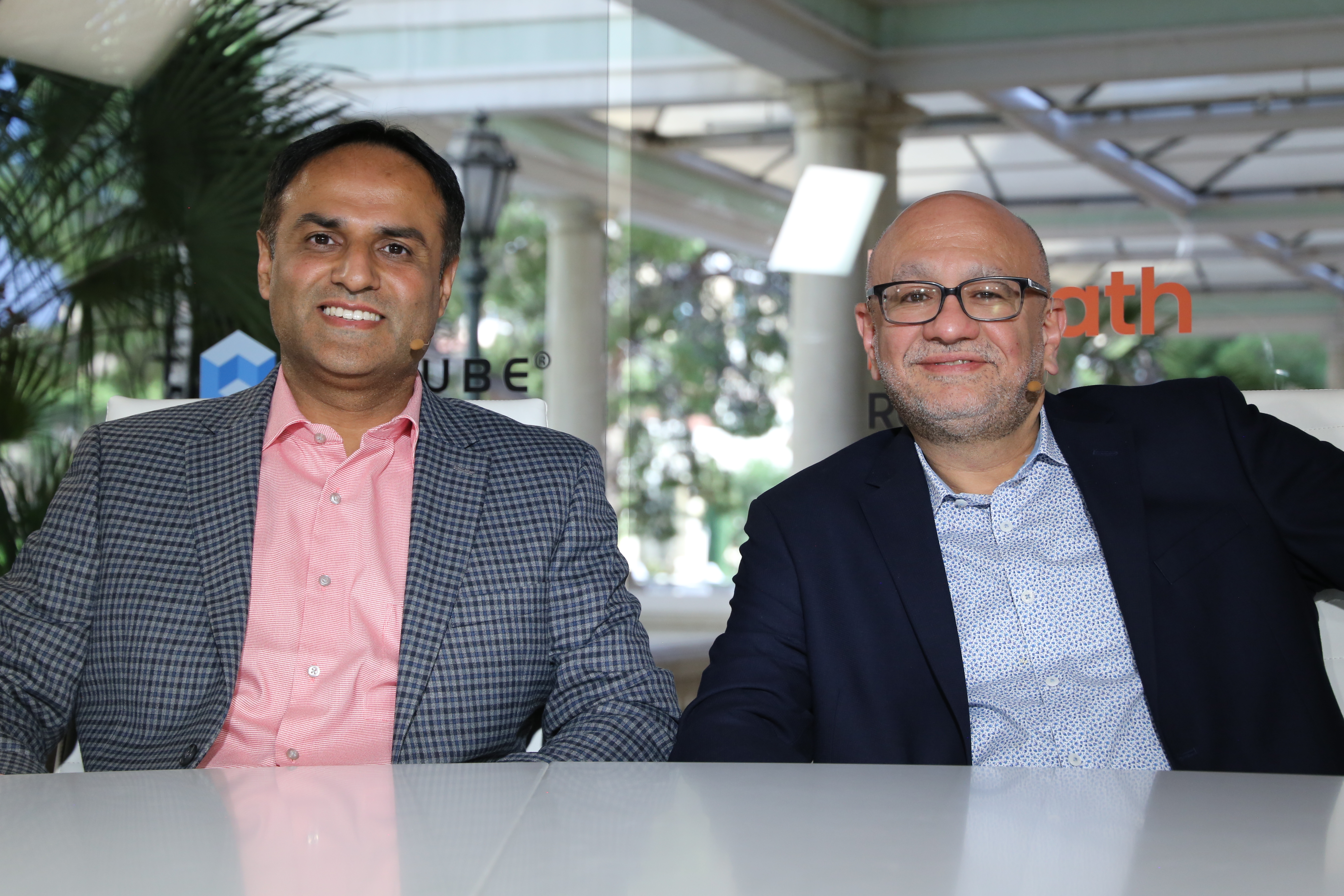 EMERGING TECH
EMERGING TECH
 EMERGING TECH
EMERGING TECH
 EMERGING TECH
EMERGING TECH
The COVID-19 pandemic has undoubtedly posed numerous challenges for the healthcare industry, one of which is the need to do more with less. And this journey toward increased efficiency has an inevitable path: automation.
With a program started in 2019 in partnership with automation platform company UiPath Inc., Blue Cross and Blue Shield has automated several processes within the organization that are already translating into gains, with impact reaching the bottom line, according to Jim Petrassi (pictured, right), chief technology officer of Blue Cross and Blue Shield of IL, TX, MT, OK, NM.
“We now have 250 bots; we measure what we call annualized efficiency gains,” he said. “So, how much efficiency are we getting by these bots? The bots are doing this repetitive work that people would do, and what we’re finding is we’ve got about $11 million in annualized efficiency gain through the process. And we’re just getting started.”
Petrassi and Jagjit Dhaliwal (pictured, left), vice president and global CIO industry lead at UiPath, spoke with Dave Vellante and Lisa Martin, co-hosts of theCUBE, SiliconANGLE Media’s livestreaming studio, during UiPath’s Forward IV conference. They discussed how automation drives the healthcare industry to lower costs, better outcomes and higher quality; how it helps organizations meet new regulatory requirements; and the role of the executive sponsor in the evolution of healthcare technology systems. (* Disclosure below.)
The automation implementation process in any organization includes the steps of defining use cases and establishing the best strategy to solve them. Blue Cross and Blue Shield got started by looking at its structural processes, gathering the use cases and then classifying and prioritizing them based on those with the greatest impact, according to Petrassi.
“We understand there are X number of people that do this in X number of days, and we think this bot can take some load off of them,” he explained. “So, we go in with the business case and then the UiPath platform actually allows us to measure how much is that pot running?”
With the technology, Blue Cross and Blue Shield has been able to transfer people from mundane tasks to ones that require more intellectual work, “maximizing human capital,” according to Petrassi. Automation has also allowed cost avoidance as the business can grow without adding staff.
In addition, the process has helped the company to respond to industry changes, including new regulatory mandates. For example, even before the federal government, the state of Texas passed an equivalent of the “No Surprises Act” to protect consumers from unexpected medical bills, and Blue Cross and Blue Shield relied on automation to handle this.
“It requires a lot of processes to put in place because now you have providers and payers having to deal with disputes, and we thought there might be 5,000 of these in the first year, [but] there were 21,000 in the first year. And so far this year we’re doubling that amount,” Petrassi stated.
The company used automation to process this without having to add many employees.
“If we had to add staff for that, it would have literally been maybe hundreds of people. But now you can clearly put a value on it, and it’s millions of dollars a year that we would have otherwise had to spend,” he said.
Although the power to reduce costs and improve results is one of the most attractive points of automation, especially for financial executives focused on the bottom line, this is not the only way that automation generates value to enterprises, according to Dhaliwal.
During the COVID-19 pandemic, automation showed its importance by allowing organizations to run against time, do work they didn’t even have the human capacity to do, and meet different compliance needs, he pointed out.
“If you look at how automation was able to help … generally it was never about cost at that time, it was about the human lives,” Dhaliwal explained. “You always may not be able to quantify it, but you look at [and say]: ‘OK, how are we maximizing the value?’”
Los Angeles County, where Dhaliwal used to work, deployed bots for the COVID contact tracing program. As the pandemic began to escalate, the most populous county in the United States began to interview all people who tested positive and then enter that data into the electronic health record for epidemiologists to track trends and analyze how the county was doing compared to others and nationally.
Initially, the data was processed and entered into the EHR manually by 15 employees designated just for that. They were processing about 600 interviews a day, and every day there was a backlog of another 2,500 interviews, according to Dhaliwal.
“We didn’t have time and money to find more data-entry operators, and bots were able to actually clear up all the backlog, so the value which we were able to bring is way beyond the cost elements,” he concluded.
Watch the complete video interview below, and be sure to check out more of SiliconANGLE’s and theCUBE’s coverage of UiPath’s Forward IV conference. (* Disclosure: TheCUBE is a paid media partner for the UiPath’s Forward IV conference. Neither UiPath Inc., the sponsor for theCUBE’s event coverage, nor other sponsors have editorial control over content on theCUBE or SiliconANGLE.)
THANK YOU